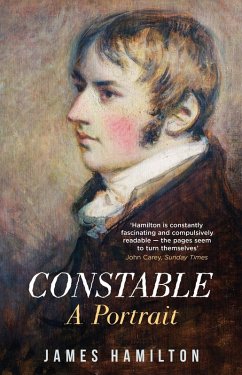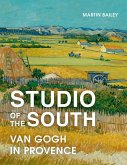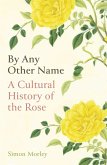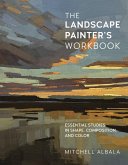John Constable (1776-1837), the revolutionary nineteenth-century painter of the landscapes and skies of southern England, is Britain's best-loved but perhaps least understood artist. The major Constable exhibitions held since 2000 in London, Paris, New York and Washington attracted unprecedented numbers of visitors and wide press coverage. Constable's Hay-Wain, one of the top five 'must-see' paintings in the National Gallery, is rivalled only by Gainsborough's Morning Walk and Turner's Fighting Temeraire as the painting that speaks for the achievements of eighteenth- and nineteenth-century British art. As biographer of Gainsborough and Turner, James Hamilton's special insights give a unique perspective to Constable, and set him in his proper context as a giant of European art.
While his paintings reflect visions of landscape that shocked and perplexed his contemporaries, he could himself also shock and perplex with his argumentative and revealing letters. John Constable was an active and energetic correspondent. His letters and diaries - there are altogether over one thousand letters from and to him - reveal a man of passion, opinion and discord, while his character and personality is concealed behind the high shimmering colour of his paintings.
The paintings show him to be attentive to detail, spontaneous in gesture, brave in his use of colour, and so powerful an advocate for his native county that even after two hundred years his work is scrutinised for social and agricultural information. What we learn from his landscapes is that Constable had sharp local knowledge of Suffolk, a clarity of expression of the skyscapes above Hampstead, an understanding of the human tides in London and Brighton, and a rare ability in his late paintings of Salisbury Cathedral to transform silent suppressed passion into paint. His tight geographical boundary within the south of England defines his world view.
Letters to and from his family shine light not only on Constable himself, but on his parents who had an enduring concern for him. They reveal too the lives and circumstances of his brothers and his sisters, his cousins and his aunts, who serve to define the social and economic landscape against which he can be most clearly seen. These multifaceted reflections draw a sharp picture of John Constable, the person as well as the painter.
James Hamilton's biography reveals a complex, troubled man, and will explode previous mythologies about this timeless artist.
While his paintings reflect visions of landscape that shocked and perplexed his contemporaries, he could himself also shock and perplex with his argumentative and revealing letters. John Constable was an active and energetic correspondent. His letters and diaries - there are altogether over one thousand letters from and to him - reveal a man of passion, opinion and discord, while his character and personality is concealed behind the high shimmering colour of his paintings.
The paintings show him to be attentive to detail, spontaneous in gesture, brave in his use of colour, and so powerful an advocate for his native county that even after two hundred years his work is scrutinised for social and agricultural information. What we learn from his landscapes is that Constable had sharp local knowledge of Suffolk, a clarity of expression of the skyscapes above Hampstead, an understanding of the human tides in London and Brighton, and a rare ability in his late paintings of Salisbury Cathedral to transform silent suppressed passion into paint. His tight geographical boundary within the south of England defines his world view.
Letters to and from his family shine light not only on Constable himself, but on his parents who had an enduring concern for him. They reveal too the lives and circumstances of his brothers and his sisters, his cousins and his aunts, who serve to define the social and economic landscape against which he can be most clearly seen. These multifaceted reflections draw a sharp picture of John Constable, the person as well as the painter.
James Hamilton's biography reveals a complex, troubled man, and will explode previous mythologies about this timeless artist.
Dieser Download kann aus rechtlichen Gründen nur mit Rechnungsadresse in A, B, BG, CY, CZ, D, DK, EW, E, FIN, F, GR, HR, H, IRL, I, LT, L, LR, M, NL, PL, P, R, S, SLO, SK ausgeliefert werden.









